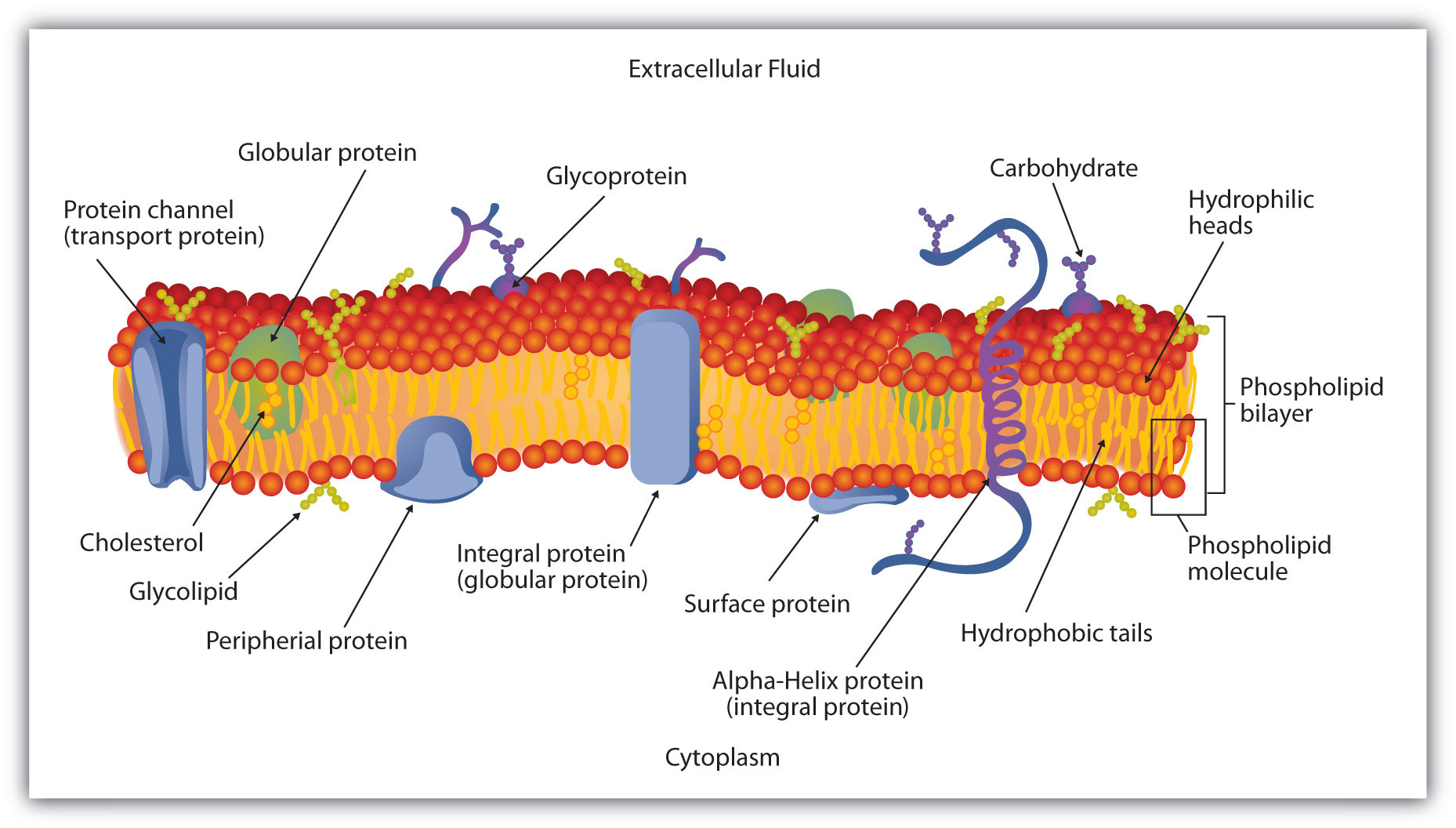Cell surface membrane is called the fluid mosaic structure because molecules are in constant motion which makes the structure fluid and when viewed from above the pattern of protein molecules look mosaic
Diagram of phospholipid bilayer
Phospholipid - forms bilayer with hydrophilic head projecting outwards and hydrophobic tails projecting inwards
extrinsic/peripheral protein - do not penetrate bilayer and act as carrier proteins
intrinsic/integral protein - lie within bilayer and act as channel proteins
cholesterol - maintains fluidity so prevents bilayer from being to fluid in hot temperatures and too solid in cold temperatures
glycoprotein - short chain pf sugar molecules attached to proteins and act as receptors for hormone and recognition sites for anti bodies
glycolipid - short chain of sugar molecules attached to phospholipid and act as receptors for hormones and recognition site for anti bodies
